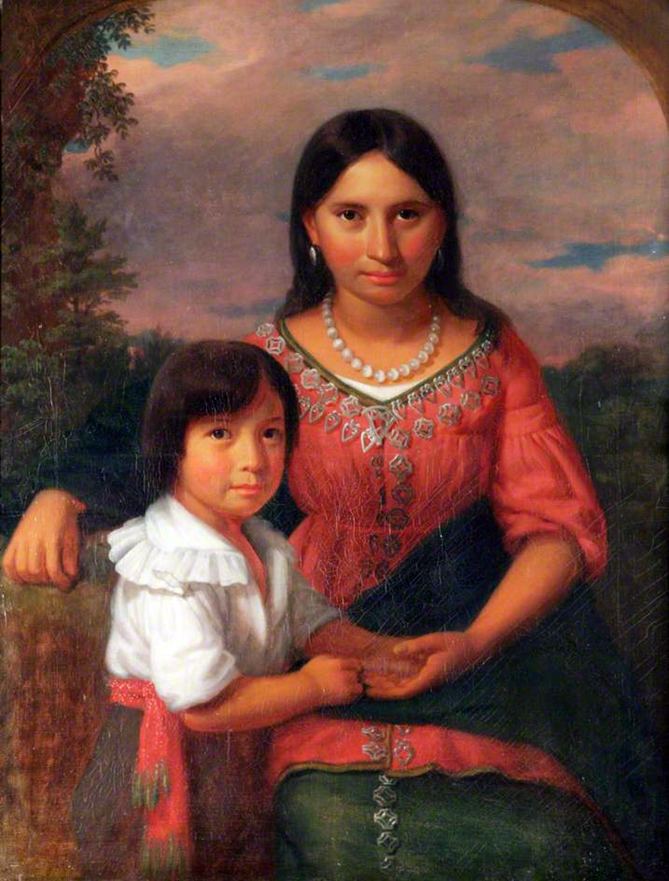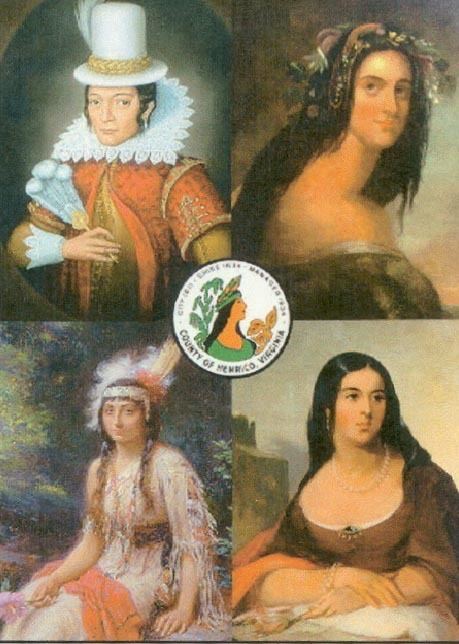Religion Christianity Parents Pocahontas, John Rolfe Died 1680, Kippax Plantation | Name Thomas Rolfe Children Jane Rolfe, Anne Rolfe | |
 | ||
Grandparents Powhatan, Dorothea Mason, Nonoma Winanuske Matatiske, John Rolfe Sr. Spouse Elizabeth Washington (m. 1632–1633), Jane Poythress Similar People | ||
Pocahontas 2: The Last Cringe Part 1
Thomas Rolfe (January 30, 1615 – c.1680?) was the only child of Pocahontas and her English husband, John Rolfe. His maternal grandfather was Wahunsunacock, the chief of the Powhatan tribe in Virginia.
Contents

Early life

Thomas Rolfe was born in Virginia on January 30, 1615. Governor Sir Thomas Dale accompanied Thomas Rolfe and his parents on their trip to England aboard the Treasurer in 1616. He was a year old during this voyage, and was not necessarily immune to the diseases and hardships of the voyage. Thomas survived, but a year later in spring 1617 was stricken with a severe fever, as was his mother.

The Rolfe family was preparing to re-embark on the George ship commanded by Samuel Argall when Rebecca (Pocahontas) died, possibly of consumption. at Gravesend Kent. The voyage continued but Thomas was left in Plymouth, England with Sir Lewis Stukley, and was later transferred into the care of his uncle, Henry Rolfe. His father, however, sailed to Virginia without him after being persuaded by Admiral Argall and other members of the journey that he was too sick to continue the voyage; this was the last time the two ever saw each other. Thomas remained in his uncle's care until he reached roughly 21 years of age, by which time his father had already died. As Henry raised Thomas, he felt he deserved compensation from his brother's estate, and therefore petitioned the Virginia Council in October 1622, claiming entitlement to a portion of John Rolfe's land. It is assumed that Thomas returned to Virginia in 1635, and there is no further mention of his whereabouts or doings until 1641.

Once established in Virginia again, Thomas fostered both his reputation as a plantation owner, and as a member of his mother's lineage.
Family
As Rolfe was a child of an Englishman and a Native American woman, some aspects of his life were particularly controversial. He expressed interest in rekindling relations with his Native American relatives, despite societal ridicule and laws that forbade such contact. In 1641, Rolfe petitioned the governor for permission to visit his "aunt, Cleopatra, and his kinsman Opecanaugh".
(Often named as the son of John Rolfe the colonist was a different Thomas Rolfe, who married Elizabeth Washington in September 1632 at St James's Church in Clerkenwell, London. This couple had two children and lived in England until after 1642. Many people wrongly claim descent from Pocahontas and John Rolfe through this unrelated Thomas Rolfe.)
Thomas Rolfe later married a woman named Jane Poythress, who was the daughter of Captain Francis Poythress, a prosperous landowner in Virginia. They had one daughter together, who was also named Jane, after her mother.
In 1698 his grandson, John Bolling (Jane's son), released to William Browne his rights in land, in a deed in which Bolling is identified as "...son and heir of Jane, late wife of Robert Bolling of Charles City County, Gent., which Jane was the only daughter of Thomas Rolf, dec'd..." As confirmed by the 1698 deed quoted above, his daughter Jane married Robert Bolling. Robert Bolling and Jane Rolfe Bolling had one child; their son John was born January 26, 1676.
Land
According to his father's will, both Thomas and Elizabeth, his half-sister, received named land. There is no extant proof that some land came from the Native Americans. However Native Americans did not 'hold' land in the English way. There is no mention of former Indian land in John Rolfe's will, however, John Rolfe names Thomas as the rightful heir of all his land, profits and any royalties pertaining to such land. There were rumors in 1618 that when Thomas came of age, he would inherit a sizable portion of Powhatan territory; this information was transmitted through Argall to London, stating, "'Opechanano and the Natives have given their Country to Rolfe's Child and that they will reserve it from all others till he comes of yeares...." (Mossiker). There is no extant documentation that when Thomas arrived in Virginia in 1640, the land was recorded as "Varina," his patrimonial property sixteen miles below Richmond.
Thomas's step-grandfather, named Captain William Peirce, received a grant of 2000 acres of land on June 22, 1635, for the "transportation of 40 persons among whom was Thomas Rolfe". He then listed Thomas as heir to his father's land. Prior to March 1640, Thomas took possession of this land which was located on the lower side of the James River.
Thomas also inherited a tract of some 150 acres on June 10, 1654, in Surry County, across from Jamestown; the land was described in a later deed as "Smith's Fort old field and the Devil's Woodyard swamp being due unto the said Rolfe by Gift from the Indian King".
The year after the 1644 Indian attack on the colony, four forts were established to defend the frontier: Fort Henry, Fort Royal, Fort James, and Fort Charles. Fort James was to be under the command of Thomas Rolfe as lieutenant as of October 5, 1646. He was given six men, and was instructed to fight against the Native Americans—his own people;
And it is further enacted and granted, That left.[Lieutenant] Thomas Rolfe shall have and enjoy for himselfe and his heires for ever fort James alias Chickahominy fort with fowre hundred acres of land adjoyning to the same, with all houses and edifices belonging to the said forte and all boats and ammunition at present belonging to the said fort; Provided that he the said Leift. Rolfe doe keepe and maintaine sixe men vpon the place duringe the terme and time of three yeares, for which tyme he the said Leift. Rolfe for himselfe and the said sixe men are exempted from publique taxes.
Then, on October 6, 1646, Thomas was put in charge of building a fort at Moysonec, for which he received 400 acres (160 ha) of land. This fort was located on the west side of Diascund Creek.
Several years later, Rolfe patented 525 acres on August 8, 1653, "...lying upon the North side of Chickahominy river commonly called and known by the name of James fort...", apparently including the 400 acres he had received in 1646. This James Fort land was re patented by William Browne on April 23, 1681. The tract was described in the patent as "formerly belonging to Mr Thomas Rolfe, dec'd", thus establishing that Rolfe had died before that date.
Death
The last recorded mention of Thomas Rolfe exists in a land patent from September 16, 1658. While some sources claim that Thomas died in 1680, others claim that the exact year is unknown. Some evidence purports that Thomas Rolfe died in James City County, Virginia, however the records of the county were destroyed in 1685 during a fire.
Legacy
Many non-Native people in the United States claim descent from Pocahontas through her son, Thomas Rolfe. Rolfe's birth was recorded as the first time a child was born to a Virginian Native American woman and an English man in Virginia's history.
Moreover, many people in the United Kingdom incorrectly claim descent from Pocahontas through another unrelated Thomas Rolfe by his wife Elizabeth Washington.
The Sedgeford Hall Portrait, once believed to represent Pocahontas and her son Thomas Rolfe, has been re-identified as being Pe-o-ka (wife of Osceola) and their son.
The birth of Thomas Rolfe, as he was both white and Native American, reinstated peace between the Powhatans and the European settlements. Early in his career as deputy governor, Argall reported in a letter published within the Virginia Company Records that Powhatan "goes from place to place visiting his country taking his pleasure in good friendship with us laments his daughter's death but glad her child is living so doth opachank".
Thomas appears as both an infant and toddler in the 2005 theatrical film The New World, but is absent in the 1998 Disney animated straight-to-video film Pocahontas II: Journey to a New World, which failed to reflect both the conversion of Pocahontas to Christianity and the marriage of Pocahontas and John Rolfe.
